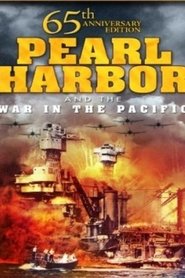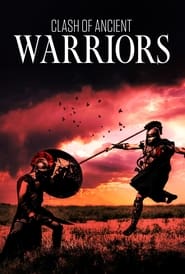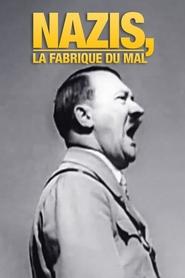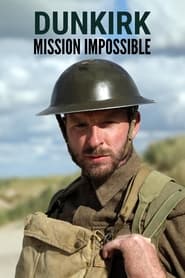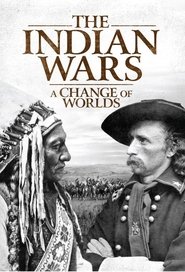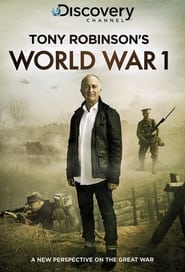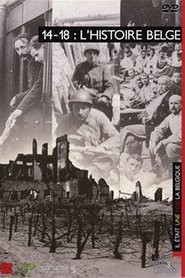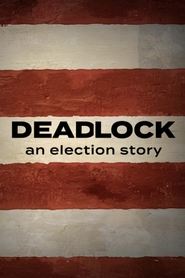Popular War Politics TV Series - Page 106
-
Pearl Harbor
2006
Pearl Harbor
2006
Series documenting the events leading up to, during and after the attack on Pearl Harbor. -
Clash of Ancient Warriors
2023
Clash of Ancient Warriors is a series that uses modern science to investigate the mysteries of the most legendary battles from ancient times. Spartans vs Persians in the battle of Thermoplyae, Hannibal vs Rome in the battle of Cannae, The Knights Templar vs Saladdin’s riders at Mongisard, Greeks vs Trojans in the siege of Troy...Military genius and epic battles have led the greatest civilisations to the pinnacle of glory...or the brink of collapse. Join scientists as they hunt for the hidden clues and traces of titanic clashes that could unlock the truth about how one army triumphed and changed the course of history. Unfolding s a countdown to annihilation, each episode builds on the scientist’s investigation to retrace, hour by hour, the dramatic chain of events that ultimately led one side to a bloody victory. -
Navires de Légende
2021
-
UpFront
2015
UpFront
2015
With the thrust and parry of rigorous debate, Mehdi Hasan cuts through the headlines to challenge conventional wisdom, highlight contradictions and uncover double standards. -
True Evil: The Making of A Nazi
2018
star 8This ground-breaking series examines the lives of the leading Nazis, in an effort to answer the question, why did it happen? It explores and tries to understand the incredible transformation of educated men into Nazi criminals, by charting the lives of six people who over the course of 20 years descend into moral oblivion. -
Dunkirk: Mission Impossible
2022
star 5Former marine JJ Chalmers gives a unique perspective on the evacuation of Dunkirk. -
OCCRP
2024
-
Rescue Warriors
2005
Rescue Warriors
2005
Go inside the intense training to become a USAF Pararescue Jumper. Meet the trainees and be there as they endure one of the longest and toughest special operations training courses in the world! Find out who will make it through so "That Others May Live." -
The Indian Wars - A Change of Worlds
2016
The year 1540 was a crucial turning point in American history. The Great Indian Wars were incited by Francisco Vazquez de Coronado when his expedition to the Great Plains launched the inevitable 350-year struggle between the white man and the American Indians. From that point forward, the series of battles between the military and civilian forces of the United States and the native American Indians began when blood was shed and ultimately tens of thousands of lives were lost on both sides. The Battle of Tippicanoe, the Battle of Horseshoe Band, all three Seminole Wars and the Battle of Little Big Horn were some of the most important conflicts that led up to the last massacre, the Battle of Wounded Knee, where America's landscape would be forever changed! -
Tony Robinson's World War 1
2015
star 6.5Sir Tony Robinson, the history presenter and former Black Adder star, tells the story of the Great War. How it started, how it changed the world and how it finished with a 100 day flourish of military brilliance, which finally put an end to four years of incompetence and slaughter. With the aid of hundreds of amazing archived 3D images of the Great War which chronicle WWI from start to finish and breathe new life into the story, Tony Robinson's World War I allows modern audiences to see the war in a completely new way. Robinson will also show how the Great War changed British people for generations to come – liberating large portions of the working class, powering the rise of the Labour party and breaking the old ties of service to the aristocracy. -
England's Forgotten Queen: The Life and Death of Lady Jane Grey
2018
star 7The rise and fall of Lady Jane Grey. England's Queen for only 9 days -
Поклик кохання
2024
Поклик кохання
2024
-
Army: Behind the New Frontlines
2017
Filmed over 18 months, this documentary series goes into the heart of the British Army. Through the eyes of the rank and file and the leaders, it shows the challenges of fighting wars when we are not at war. -
Liberation: D-Day to Berlin
2025
star 9Experience the liberation of Western Europe from every angle, as astonishingly colourised and expertly restored footage bring the historic turning point of World War II back to vivid life. -
DEADLOCK
2024
DEADLOCK
2024
Experts explore ethical dilemmas, promoting constructive dialogue about polarizing issues.
 Netflix
Netflix
 Amazon Prime Video
Amazon Prime Video
 Apple iTunes
Apple iTunes
 Apple TV Plus
Apple TV Plus
 Disney Plus
Disney Plus
 Google Play Movies
Google Play Movies
 Paramount Plus
Paramount Plus
 Hulu
Hulu
 HBO Max
HBO Max
 YouTube
YouTube
 fuboTV
fuboTV
 Peacock
Peacock
 Peacock Premium
Peacock Premium
 Amazon Video
Amazon Video
 The Roku Channel
The Roku Channel
 AMC+
AMC+
 Kocowa
Kocowa
 Hoopla
Hoopla
 The CW
The CW
 Vudu
Vudu
 Starz
Starz
 Showtime
Showtime
 PBS
PBS
 Pantaflix
Pantaflix
 FXNow
FXNow
 Tubi TV
Tubi TV
 Kanopy
Kanopy
 Comedy Central
Comedy Central
 Crunchyroll
Crunchyroll
 Microsoft Store
Microsoft Store
 Redbox
Redbox
 Sun Nxt
Sun Nxt
 ABC
ABC
 DIRECTV
DIRECTV
 Crackle
Crackle
 Fandor
Fandor
 Plex
Plex
